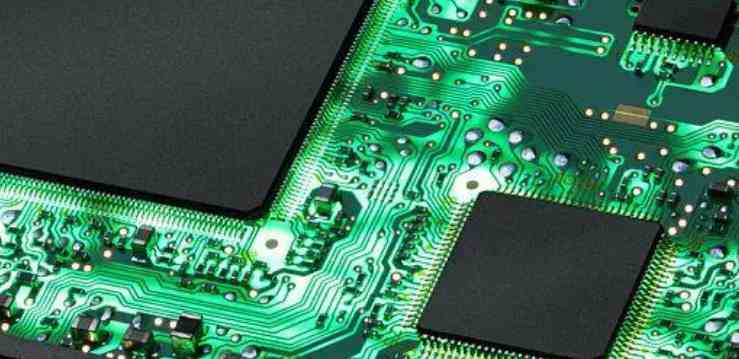
1. Treatment of connecting legs in large area conductors
In a large area of grounding (electricity), the legs of commonly used components are connected to it, and the treatment of the connecting legs needs comprehensive consideration. In terms of electrical performance, the welding pad of the component leg is fully connected with the copper surface, but there are some bad hidden dangers for the welding assembly of the components, such as: ① welding requires a high-power heater. (2) easy to cause virtual solder joints. Therefore, taking into account the electrical performance and process needs, make a cross welding pad, called heat shield, commonly known as Thermal pad (Thermal), so that when welding due to excessive heat dissipation section and the possibility of virtual solder joint greatly reduced. The electrical connection (ground) leg of the multilayer plate is treated the same.
2, The role of network system in wiring
In many CAD systems, the wiring is determined by the network system. Although the grid is too dense, the path is increased, but the step is too small, the amount of data in the graph field is too large, which inevitably has higher requirements for the storage space of the equipment, but also has a great impact on the computing speed of the object computer electronic products. Some paths are not valid, such as those occupied by the pad of the component leg or by the mounting holes, fixing holes, etc. Too sparse grid and too few channels have great influence on the propagation rate. Therefore, it is necessary to have a reasonably dense grid system to support the wiring.
The distance between the legs of a standard component is 0.1 inch (2.54mm), so grid systems are generally based on 0.1 inch (2.54mm) or integral multiples less than 0.1 inch, such as 0.05 inch, 0.025 inch, 0.02 inch, etc.

3, Design Rule Check (DRC)
After the wiring design is completed, it is necessary to carefully check whether the wiring design conforms to the rules formulated by the designer, and also confirm whether the rules formulated meet the requirements of the printed board production process. The general inspection includes the following aspects:
(1) Whether the distance between wire and wire, wire and component pad, wire and through hole, component pad and through hole, through hole and through hole is reasonable, and whether it meets the production requirements.
(2) Is the width of the power cord and ground wire appropriate, and is there tight coupling between the power supply and ground wire (low wave impedance)? Is there any place in PCB where the ground wire can be widened?
(3) Whether the best measures are taken for the key signal lines, such as the shortest length, the protection line, the input line and the output line are clearly separated.
(4) Whether the analog circuit and the digital circuit have their own independent ground wire.
(5) Whether the graphics (such as ICONS and marking) added to the PCB will cause signal short circuit.
(6) Modify some unsatisfactory linear shapes.
(7) Is there a process line on the PCB? Whether the solder resistance meets the requirements of the production process, whether the solder resistance size is appropriate, whether the character mark is pressed on the device pad, so as not to affect the quality of the electrical equipment.
(8) Whether the outer frame edge of the power layer in the multilayer board is reduced, such as the copper foil of the power layer exposed outside the board is easy to cause short circuit.
The second PCB layout
Layout is an important part of design. The result of layout will directly affect the effect of wiring, so it can be considered that a reasonable layout is the first step of successful PCB design.
Layout is divided into two ways, one is interactive layout, the other is automatic layout, is generally adjusted on the basis of automatic layout with interactive layout, in the layout can also be redistributed according to the situation of the line, the two gate circuit exchange, so that it becomes the best layout for easy wiring. After the layout is completed, the design documents and relevant information can be returned and marked on the schematic diagram, so that the relevant information in the PCB board is consistent with the schematic diagram, so that the future file and change design can be synchronized, and the relevant information of the simulation can be updated, so that the electrical performance and function of the circuit can be verified at the board level.
1 Consider the overall aesthetics
The success of a product, one is to pay attention to the internal quality, two is to take into account the overall beauty, both are more perfect in order to consider the product is a success. On a PCB board, the layout of components is required to be balanced, dense and orderly, not top-heavy or heavy.
2 Check the layout
Are the dimensions of the printed board consistent with those of the machined drawings? Can it meet the requirements of PCB manufacturing process? Is there a location marker?
Does the component conflict in two - and three-dimensional space?
Is the component layout dense and orderly? Is it all done?
Can frequent replacement components be easily replaced? Is the plug-in board easy to plug into the device?
Is there a proper distance between the thermal element and the heating element?
Is it convenient to adjust the adjustable element?
Are radiators installed where heat is needed? Is the air flow smooth?
Is the signal flow smooth with minimal interconnection?
Are plugs, receptacles, etc. inconsistent with mechanical design?
Is line interference considered?









